Figure. Shows an ideal gas changing its state A to state C by two different path ABC and AC.
a. Find the path along which the work done is the least.
b. The internal energy of the gas at A is 10J and the amount of heat supplied to change its state to C through the path AC is 200J. Find the internal energy at C.
c. The internal energy of the gas at state B is 20J. Find the amount of heat supplied to the gas to go from state A to state B.
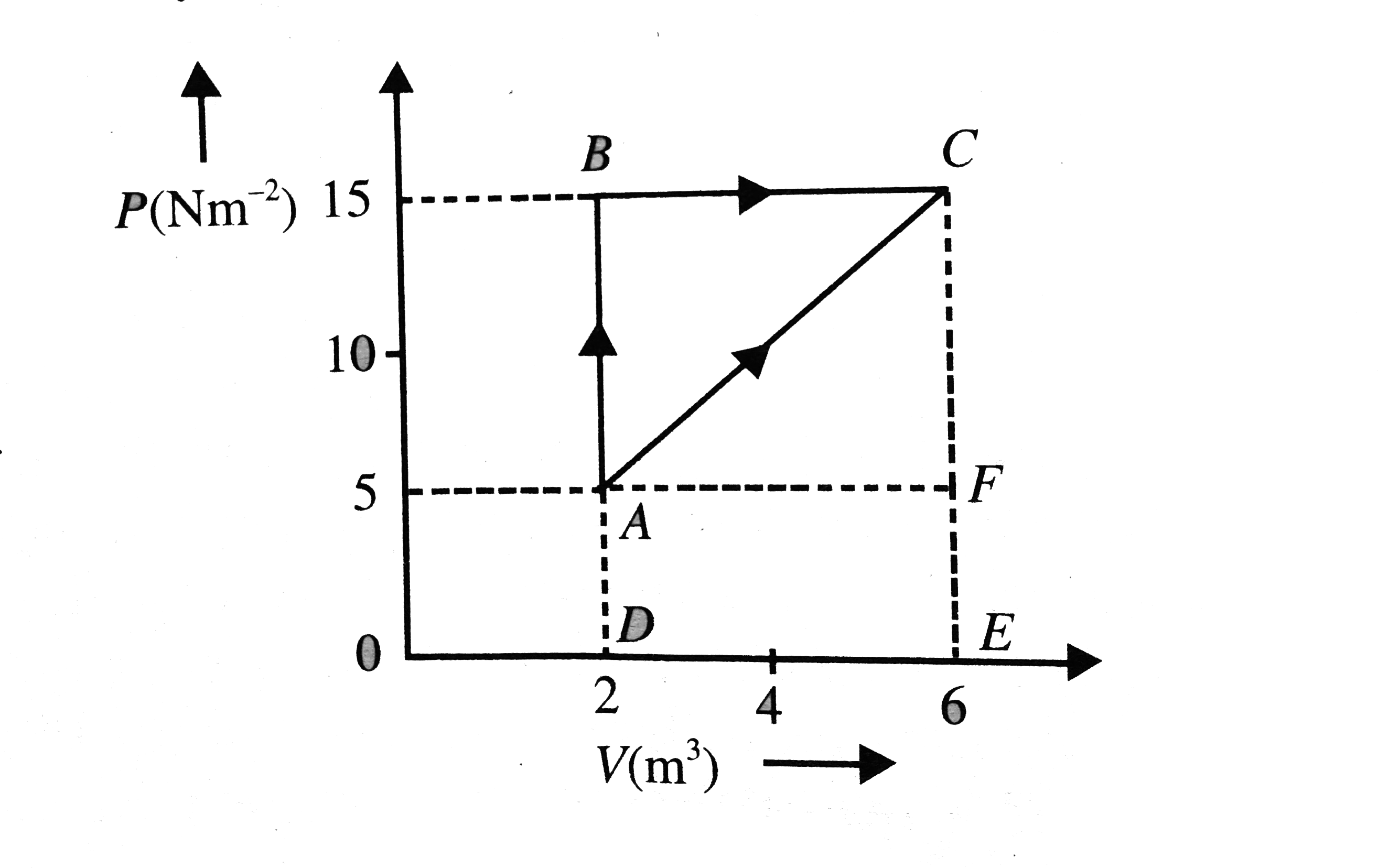
a. We know work done is given by the area below PV curve thus by observing two PV curves, AC and ABC, we can say that work done in path AC is less than that in path ABC,
b. Work done in path AC by the gas is
WAC= area of ACFEDA
= area of ACF+ area of AFED
=12×(15−5)×(6−2)×5
=20+20=40J
It is given that heat supplied in process AC is
QAC=200T
Thus change in intenal energy of gas in path AC is, from the first law of thermodynamics, given as
QAC=WAC+ΔUAC
or ΔUAC=QAC−WAC=200−40=160J
As it is given that at state A, internal energy of gas is 10J thus at state C, internal energy is
ΔUAC=UC−UA
or UC=ΔUAC+UA=16+10=170J
c. As in process AB no volume change takes place thus no work is done by or on the during path AB. Thus according to the first law of thermodynamics, we have
QAB=ΔUAB+WAB
QAB=UB+0
or QAB=20−10=10J
Topper's Solved these Questions
- KINETIC THEORY OF GASES AND FIRST LAW OF THERMODYNAMICSBOOK - CENGAGE PHYSICSCHAPTER - KINETIC THEORY OF GASES AND FIRST LAW OF THERMODYNAMICSEXERCISE - Single Correct
140 Videos
- KINETIC THEORY OF GASES AND FIRST LAW OF THERMODYNAMICSBOOK - CENGAGE PHYSICSCHAPTER - KINETIC THEORY OF GASES AND FIRST LAW OF THERMODYNAMICSEXERCISE - Multiple Corrects
29 Videos
- KINETIC THEORY OF GASES AND FIRST LAW OF THERMODYNAMICSBOOK - CENGAGE PHYSICSCHAPTER - KINETIC THEORY OF GASES AND FIRST LAW OF THERMODYNAMICSEXERCISE - Exercise 2.2
28 Videos
- KINETIC THEORY OF GASESBOOK - CENGAGE PHYSICSCHAPTER - KINETIC THEORY OF GASESEXERCISE - Compression
2 Videos
- LINEAR AND ANGULAR SIMPLE HARMONIC MOTIONBOOK - CENGAGE PHYSICSCHAPTER - LINEAR AND ANGULAR SIMPLE HARMONIC MOTIONEXERCISE - Multiple Correct Answer Type
9 Videos
Similar Questions
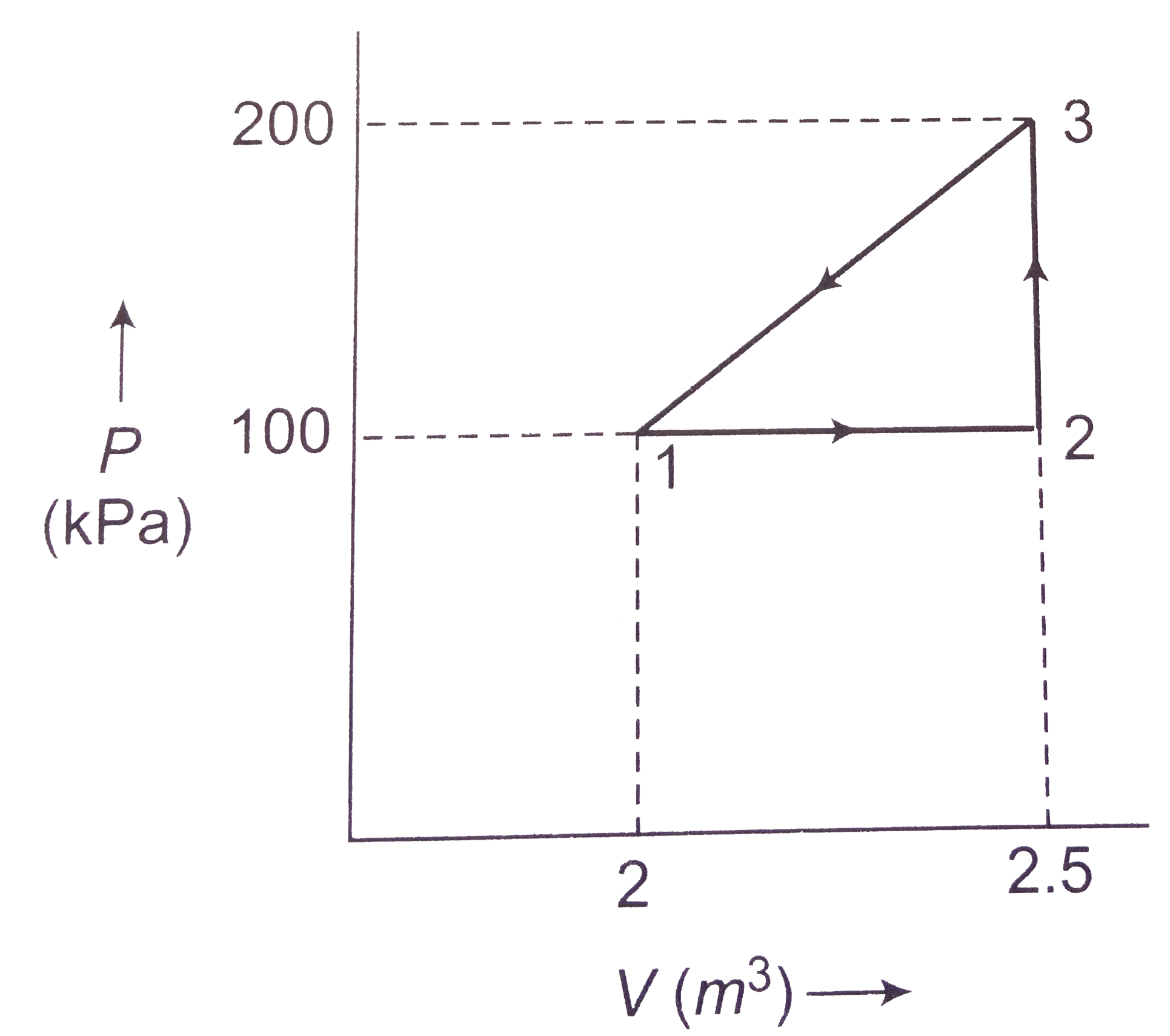
In the figure an ideal gas changes is state from state A to state C by two paths ABC and AC.
(a) Find the path along which the work done is least.
(b) The internal energy of the gas at A is 10 J and the amount of heat supplied to change its state to C through the path AC is 200 J. Calculate the internal energy at C.
(c) The internal energy of the gas at state B is 20 J. Fid the amount of the heat supplied to gas to go from A to B.
View SolutionIn the given figure, an ideal gas changes it state from A to state C by two paths ABC and AC.
(i) Find the path along which work done is the least.
(ii) The internal energy of the gas at A to 10J and the amount of heat supplied to change its state to C through the path AC is 200J. Calculate the internal energy at C.
(iii) The internal energy of the gas at state B is 30J. Find the amount of heat supplied to the gas to go from A→B.

View Solution
Knowledge Check
In the given an ideal gas can change its state from A to C by two paths ABC or AC. Then
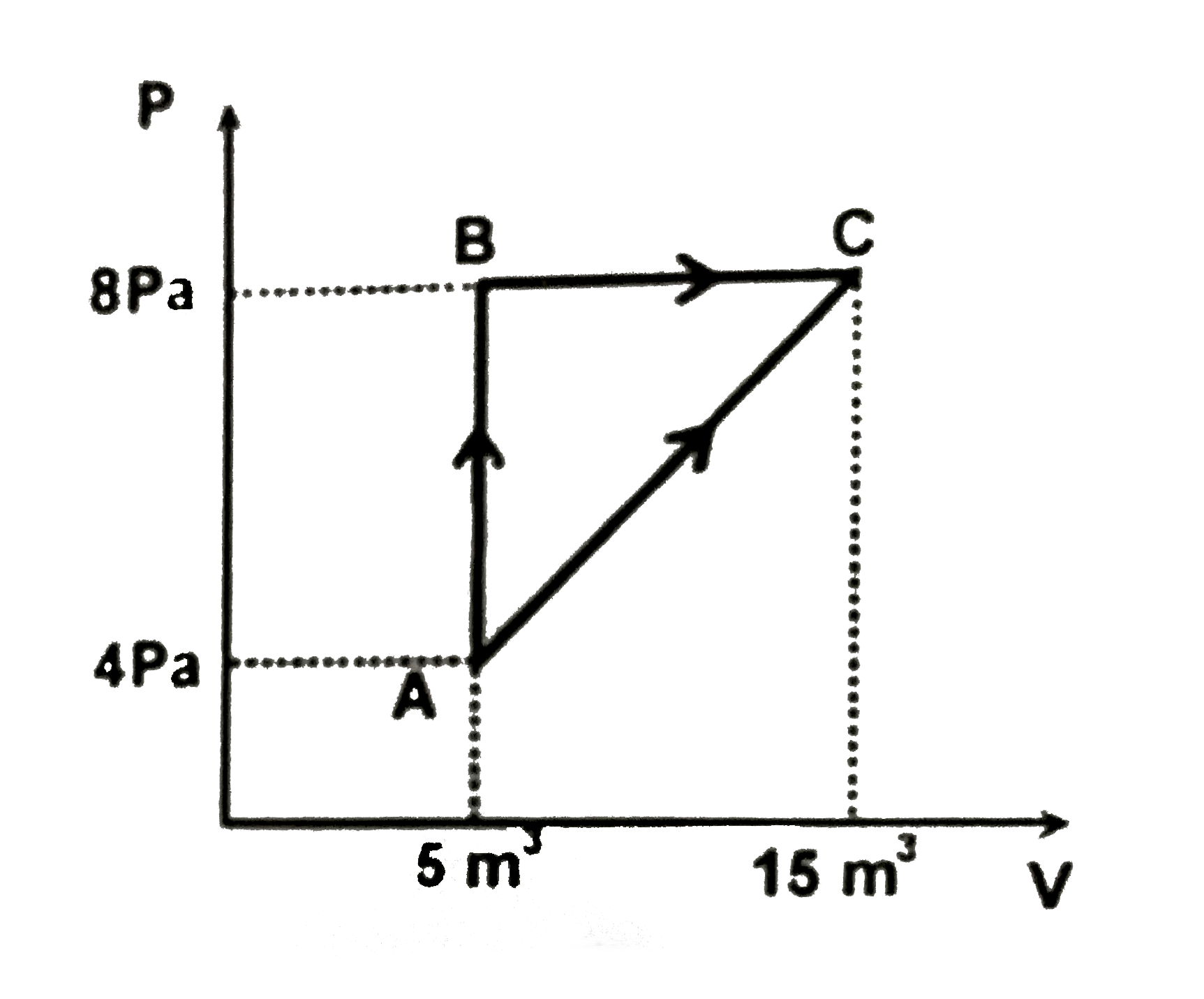 AIf the internal energy of gas 'A' is 10J and the amount of heat supplied in path AC is 200J, then the internal energy of gas at 'C' is 150JBIf the internal energyof gas at 'A' is 10J and the amount of heat supplied in path AC is 200J, then the internal energy of gas at 'C'is 75JCIf the internal energy of gas a state B is 20J. Then the amount heat supplied to the gas to go from A to B may be 5 Joule.DIf the internal energy of gas at state B is 20J. Then the amount of heat supplied to the gas to go from A and B must be 10 Joule
AIf the internal energy of gas 'A' is 10J and the amount of heat supplied in path AC is 200J, then the internal energy of gas at 'C' is 150JBIf the internal energyof gas at 'A' is 10J and the amount of heat supplied in path AC is 200J, then the internal energy of gas at 'C'is 75JCIf the internal energy of gas a state B is 20J. Then the amount heat supplied to the gas to go from A to B may be 5 Joule.DIf the internal energy of gas at state B is 20J. Then the amount of heat supplied to the gas to go from A and B must be 10 JouleFor a gaseous state if heat supplied to the system is 100 J and work done by the system is 25 J. then internal energy of the system is
A125 JB100 JC50 JD75 JIf the amount of heat given to a system is 40 J and the amount of work done on the system is 15 J then the change in internal energy is
A50 JB−50JC30JD55J
In the given figure an ideal gas changes its state from A to state C by two paths ABC and AC.
_E01_269_Q01.png)
(i) Find the path along which work done is the least.
(ii) The internal energy of gas at A is 10J and amount of heat supplied to change its state to C through the path AC is 200J. Calculate the internal energy at C.
(iii) How much is the heat involved in the process ABC and ADC?
View SolutionThe given figure shown a change of state A to state C by two paths ABC and AC for an ideal gas. Calculate the :
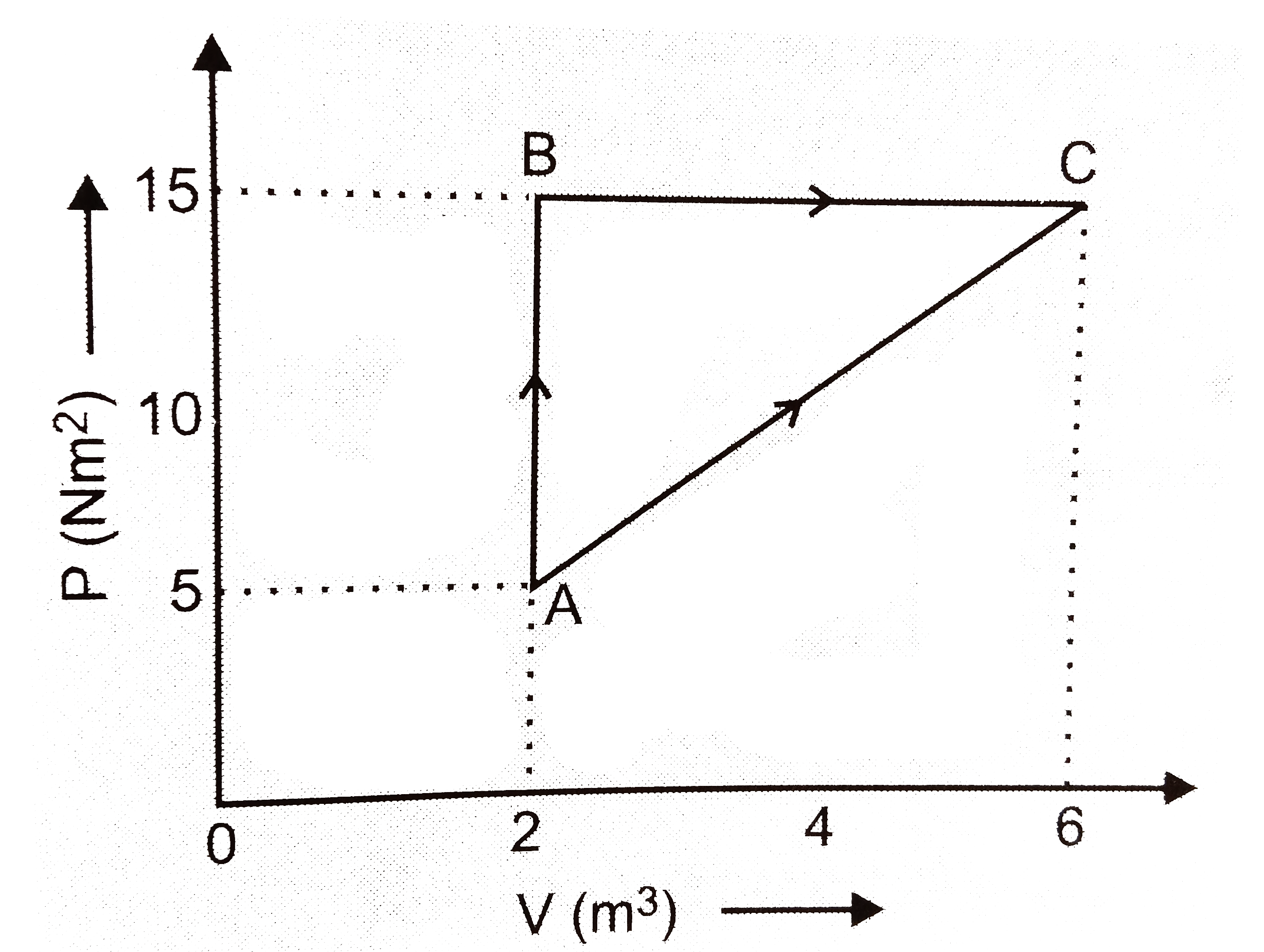
(a) Path along which work done is least.
(b) Internal energy at C if the internal energy of gas at A is 10J and amount of heat supplied to change its state to C through the path AC is 200J.
(c) Amount of heat supplied ot the gas to go from A to B, if internal energy of gas at state B is 10J.
View SolutionThe given figure shows a change of state A to state C by two paths. ABC and AC for an ideal gas. Calculate the ,
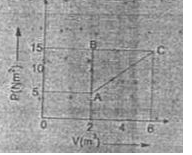
(a) Path along which work done is least.
(b) Internal energy at C if the internal energy of gas at A is 10 J and amount of heat supplied to change its state to C through the path AC is 200 J.
( c) Amount of heat supplied to the gas to gd from A to B, if internal energy of gas at state B is 10 J.
(ii) In an insulated contained 1 mole of a liquid, molar volume 100 mL. is at 1 bar liquid is steeply taken to 100 bar, where volume of liquid decreases by 1 mL. Find ΔE and ΔH for the process?
(iii) 14 g of oxygen at 0∘ C and 10 atm are subjected to reversible adiabatic expansion to a pressure of 1 atm. Calculate the work done in
(i) Litre atm.
(ii) Calorie (Given, CpCv=1.4).
View SolutionA mono-atomic gas is taken along path AB as shown. Calculate change in internal energy of the gas.
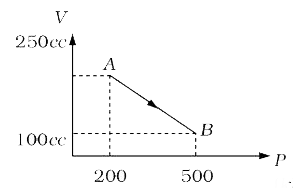
View SolutionA system is changed from state A to state B by one path and from B to A by another path. If ΔE1 and ΔE2 are the corresponding changes in internal energy, then
View Solution
